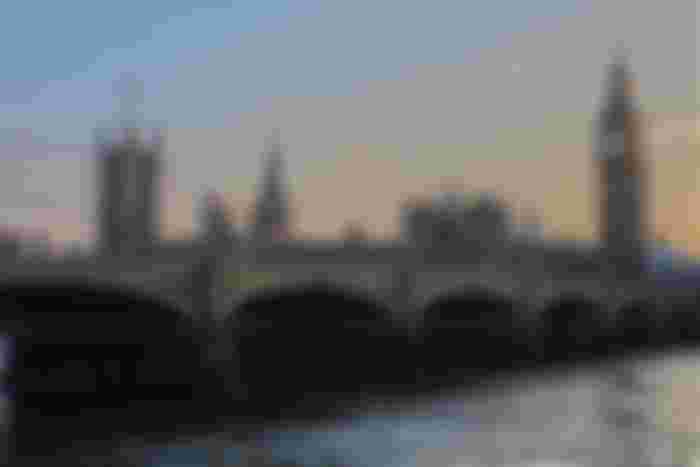The city of London is the capital of the United Kingdom. It is both one of the world's oldest and most cosmopolitan cities, with a history spanning nearly two millennia. It is not just the country's largest metropolis, but also its economic, transportation, and cultural hub.
London is located in southeastern England, 50 miles (80 kilometers) upstream from the Thames's estuary on the North Sea. The metropolis may be seen compactly within a Green Belt of open land in satellite pictures, with its main ring route (the M25 motorway) threading around it at a radius of around 20 miles (30 km) from the city center. In the mid-1950s, rigorous town planning limitations slowed the growth of the built-up region. Its physical boundaries roughly correspond to the administrative and statistical boundaries separating Greater London from the "home counties" of Kent, Surrey, and Berkshire (in clockwise order) to the south of the river and Buckinghamshire, Hertfordshire, and Essex (in clockwise order) to the north. The historic counties of Kent, Hertfordshire, and Essex include a larger territory than the modern administrative counties of the same names, and encompass large portions of the metropolitan county of Greater London, which was established in 1965. The majority of Greater London south of the Thames is historically part of Surrey, whereas the majority of Greater London north of the Thames is historically part of Middlesex.

The city's personality
While the metropolis's perimeter is firmly defined, its internal structure is extremely complex and difficult to describe. The absence of overall form is, in fact, London's distinguishing characteristic. Physically, it is a polycentric city with multiple core districts and no obvious hierarchy between them. There are at least two of everything in London: cities, mayors, dioceses, cathedrals, chambers of commerce, police forces, opera theatres, orchestras, and universities, to name a few. It acts as a composite or confederal metropolis in every way.
The walled settlement founded by the Romans on the banks of the Thames in the 1st century CE, now known as the City of London, "the Square Mile," or simply "the City"; the suburb of Southwark, facing it across the bridge on the lower gravels of the south bank; and the City of Westminster, a mile upstream on a great southward bend of the river. The three villages each had a unique and complementary purpose. The city of London, known as "the City," grew as a center of trade, commerce, and banking. Southwark, or "the Borough," became famed for its monasteries, hospitals, inns, fairs, pleasure houses, and the major Elizabethan theatres—the Rose (1587), the Swan (1595), and the world-famous Globe—in Elizabethan London (1599). Westminster sprang established around an abbey, which brought with it a royal palace and, with it, the full British governmental apparatus—legislative, executive, and judicial. It also has large parks and the West End, one of the most desirable areas for living and shopping. In the early 17th century, the north-bank communities united into a single built-up region, although they did not join into a single expanded municipality. The City of London was the only capital city in Europe to retain its medieval limits. As London grew in size and became the template of the contemporary metropolis, Westminster and other suburbs were left to build their own administrative structures—a process that was repeated a hundred times over.

Site in the city
The geological base
An undulating bed of thick white chalk, comprised of pure limestone sprinkled with flint nodules in the top beds, shapes the landscape of southeastern England. An incomplete layer of Upper Greensand (a Cretaceous rock 65 to 145 million years old) and a 200-foot (60-meter) thick waterproof layer of Gault clay lie beneath the chalk. London's underlying geologic foundation, a sturdy substrate of old Paleozoic hard rocks, lies beneath them (about 250 to 540 million years old). This basement is almost 1,000 feet (300 meters) below ground level in London, descending southward to depths of over 3,300 feet (1,000 meters) below the English Channel.

The Thames River Valley
The metropolis grew and poured over a roughly symmetrical valley site marked by shallow gravel and clay ridges rising to about 450 feet (140 meters) in the north at Hampstead and about 380 feet (115 meters) in the south at Upper Norwood, 11 miles (18 kilometers) away. The ground falls away in a series of graded plateaus formed by gravel terraces—some at 100–150 feet (30–45 meters; the Boyn terraces, such as Islington, Putney, and Richmond) and a second and more extensive level, the Taplow terraces, at 50–100 feet (15–30 meters), on which the City of London, the West End, the East End, and the elevated southern districts such as Peckham, Battersea, and Clapham—between these broken The wide floodplain of the valley bottom is the lowest ground, just a few feet above high-tide level.
A view of the city
Several public vantage points provide excellent views of the natural landscape. The best view of the city's center basin may be seen from Hampstead Heath. However, from Shooters Hill, Upper Norwood, or Alexandra Palace, one has a choice of views: inward to the City and West End's packed skyline, or outward to the wide expanses of the Home Counties, the Thames estuary, the South Downs, and the Weald. These views illustrate that, despite its size, London resembles the confined metropolises of the early twentieth century more than the amorphous and expansive megacities of today, such as Tokyo or Los Angeles. The post-World War II Green Belt border runs nicely along the London Basin's enclosing hills.

London's weather
London's weather has been recorded continuously since 1659, with particular data on wind direction available since 1723 and precipitation since 1697. The oscillations follow a cyclic pattern, with troughs of harsh winters and frigid springs in the 1740s, 1770s, 1809–17, 1836–45, and 1875–82, followed by a protracted upswing after 1919, when London's climate warmed, owing largely to milder fall weather.
The climate in modern London is similar to that of South East England, with warm winters and mild summers. The average daytime air temperature is 52 degrees Fahrenheit (11 degrees Celsius), with temperatures ranging from 42 degrees Fahrenheit (5.5 degrees Celsius) in January to 65 degrees Fahrenheit (18 degrees Celsius) in July. Statistics show that the sun shines, however briefly, on five days out of six.
Image Sources:
Image by Adam Derewecki from Pixabay
Image by E. Dichtl from Pixabay
Image by jplenio from Pixabay
Image by Kamila Smrekovska from Pixabay
Image by Ichigo121212 from Pixabay




This place is really amazing, hope to visit this place too